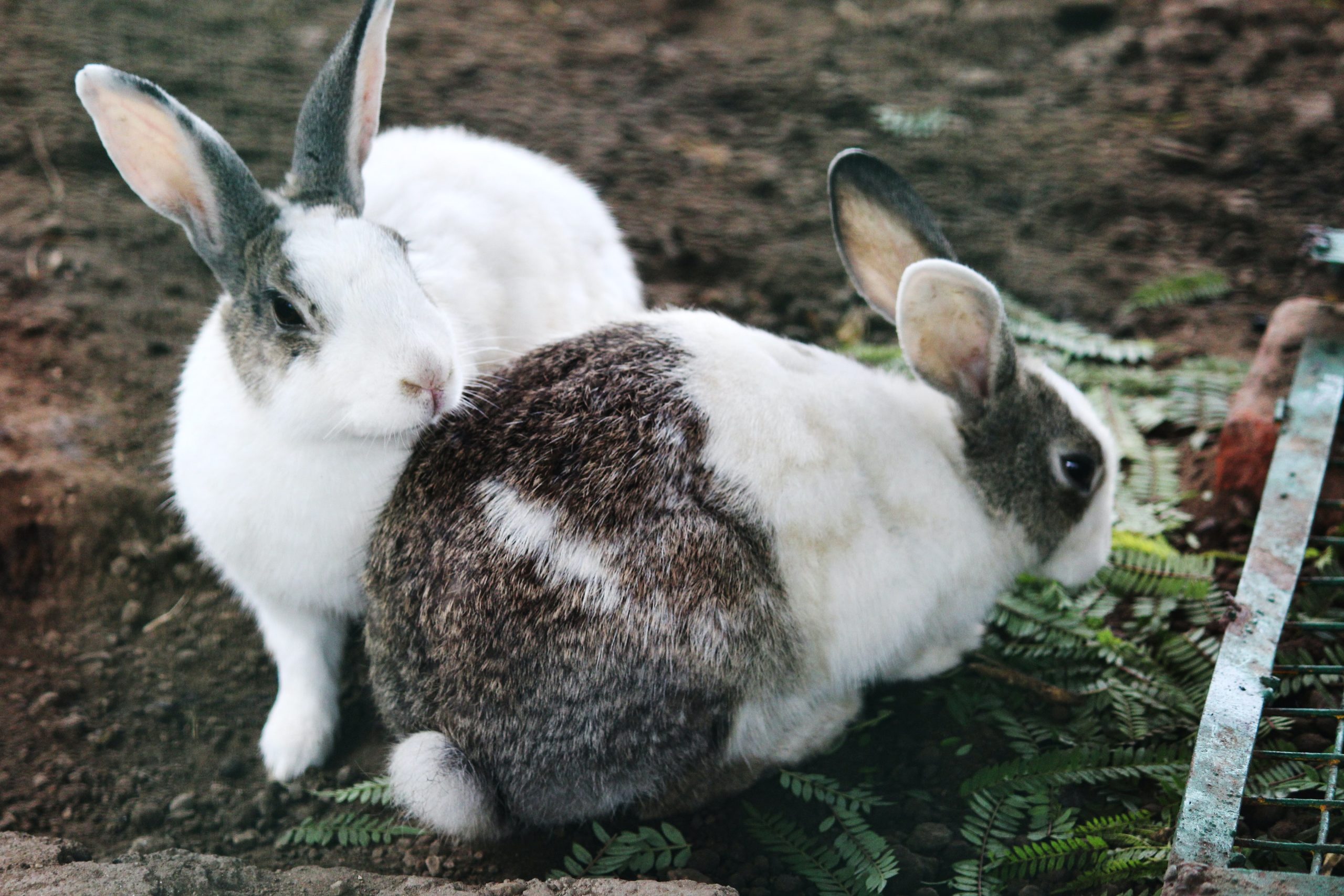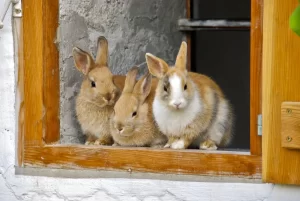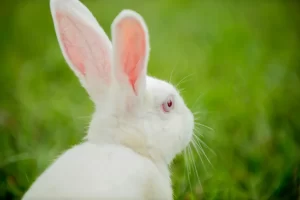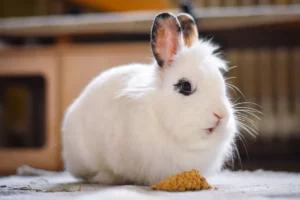Have you ever wondered how often rabbits go into heat? Well, you’re in luck! In this article, we will explore the reproductive cycle of rabbits, shedding light on the frequency of their heat cycles and the factors that influence them.
We’ll also discuss the signs and symptoms of a rabbit in heat, along with helpful tips for owners on how to cope with this phase.
So, sit back and get ready to learn all about the fascinating world of rabbits in heat.
In This Article
- 1 Key Takeaways
- 2 The Reproductive Cycle of Rabbits
- 3 Understanding Rabbit Estrus Cycles
- 4 Factors Affecting the Frequency of Rabbit Heat
- 5 Signs and Symptoms of a Rabbit in Heat
- 6 Coping With Rabbits in Heat: Tips for Owners
- 7 Breeding Considerations for Rabbit Owners
- 8 Health Risks and Precautions During Rabbit Heat Cycles
- 9 Frequently Asked Questions
- 9.1 How Long Does the Heat Cycle of a Rabbit Typically Last?
- 9.2 Can Rabbits Go Into Heat All Year Round or Is It Seasonal?
- 9.3 What Are the Behavioral Changes That Can Be Observed in Rabbits During Their Heat Cycle?
- 9.4 Are There Any Recommended Methods to Control or Prevent Rabbits From Going Into Heat?
- 9.5 How Can Rabbit Owners Help Alleviate Discomfort or Stress for Rabbits During Their Heat Cycle?
- 10 Conclusion
Key Takeaways
- Female rabbits go into heat every 14 to 16 days.
- Understanding the different stages of the estrus cycle is important for successful breeding.
- Factors such as age, breed, and environmental conditions can affect the frequency of rabbit heat.
- Recognizing the signs and symptoms of a rabbit in heat is crucial for managing and caring for them.
The Reproductive Cycle of Rabbits
Do you know when rabbits go into heat during their reproductive cycle?
Understanding the reproductive cycle of rabbits is essential for successful rabbit breeding. Female rabbits, also known as does, typically go into heat every 14 to 16 days. During this time, they exhibit certain hormonal changes that indicate their readiness for mating.
These changes include an increase in estrogen levels, which triggers behavioral changes such as restlessness, mounting other rabbits, and spraying urine. Additionally, does may become more receptive to the advances of male rabbits, also known as bucks.
It’s important to carefully observe these signs and introduce the doe to the buck during her receptive period to increase the chances of successful mating.
Understanding Rabbit Estrus Cycles
Have you learned about the different stages of a rabbit’s estrus cycle and how they affect their reproductive behavior? Understanding rabbit estrus cycles is crucial for successful rabbit breeding.
These cycles are controlled by hormonal changes in the rabbit’s body. Here are some important points to consider:
- Proestrus: During this stage, the female rabbit may display increased aggression and restlessness. It’s important to provide her with a suitable environment and ensure her safety.
- Estrus: This is the peak of the rabbit’s fertility. The female rabbit may become more receptive to the male and display mating behaviors. It’s crucial to introduce the male at the right time to maximize the chances of successful breeding.
- Metestrus: After mating, the female rabbit may show signs of disinterest towards the male. It’s important to separate them to prevent any potential harm.
- Anestrus: This is the period of reproductive inactivity. The female rabbit’s body undergoes a rest phase before the next estrus cycle begins.
Understanding these stages and the associated hormonal changes will help you make informed decisions when breeding rabbits and ensure the well-being of your animals.
Factors Affecting the Frequency of Rabbit Heat
You should consider the various factors that influence how often rabbits go into heat.
Factors such as age, breed, and environmental conditions can affect the frequency of heat cycles in rabbits.
Hormonal influences play a significant role in determining when a rabbit will go into heat. Female rabbits, also known as does, typically have a regular estrous cycle that lasts about 16-18 days. However, this cycle can be influenced by factors such as the presence of a male rabbit, known as a buck, in the vicinity. The hormonal signals released by the buck can trigger the onset of heat in the doe.
Additionally, changes in daylight duration and temperature can also impact the frequency of heat cycles in rabbits.
It’s crucial to understand these factors to better manage and care for rabbits in a way that promotes their overall well-being.
Signs and Symptoms of a Rabbit in Heat
During the mating season, male rabbits can display signs of aggression and increased territorial behavior when a female rabbit is in heat. This behavior is driven by the hormonal changes that occur in both male and female rabbits during the breeding season. Understanding the signs and symptoms of a rabbit in heat is crucial for successful rabbit breeding.
Here are some important things to know:
- Increased vocalization: Female rabbits may make louder and more frequent noises during heat, signaling their readiness to mate.
- Nesting behavior: Female rabbits may start building nests or rearranging their bedding, preparing for potential offspring.
- Increased scent marking: Male rabbits may urinate more frequently and mark their territory with stronger smelling urine.
- Mounting behavior: Male rabbits may attempt to mount female rabbits during heat, displaying their desire to mate.
Coping With Rabbits in Heat: Tips for Owners
If your rabbit is in heat, try using a combination of cooling techniques and distraction methods to cope with their increased energy levels and potential behavioral changes. Rabbit heat behavior can be challenging for owners, but with the right strategies, you can help your furry friend stay comfortable and content. Here are some tips for heat management for rabbits:
| Cooling Techniques | Distraction Methods | Behavioral Changes |
|---|---|---|
| Provide a cool, shaded area for your rabbit to relax in. | Offer engaging toys and puzzles to keep your rabbit mentally stimulated. | Increased humping or mounting behavior is common during heat. |
| Place a frozen water bottle or cooling pad in your rabbit’s enclosure. | Create an obstacle course or play area for your rabbit to explore. | Your rabbit may become more territorial or aggressive towards other rabbits. |
| Gently mist your rabbit with water to help them cool down. | Provide plenty of chew toys to prevent destructive behavior. | Your rabbit may spray urine or mark their territory more frequently. |
Remember to consult with a veterinarian for any additional guidance on managing rabbit heat behavior. By implementing these strategies, you can help your rabbit navigate this natural phase with ease.
Breeding Considerations for Rabbit Owners
Breeding rabbits can be a complex process, so it’s important for owners to carefully consider the responsibilities and commitments involved.
Rabbits have specific breeding challenges that can arise, and it’s crucial to be aware of these before deciding to breed them. Here are some key points to consider:
- Breeding rabbits requires a deep understanding of their reproductive health and behavior, as well as the ability to provide appropriate care and support throughout the breeding process.
- It’s essential to have a suitable breeding environment that’s safe, clean, and spacious enough to accommodate the rabbits’ needs.
- Owners must be prepared for the potential risks and complications that can arise during breeding, such as pregnancy complications or the need for veterinary intervention.
- Responsible breeding also involves finding suitable homes for the offspring and ensuring their long-term welfare.
Health Risks and Precautions During Rabbit Heat Cycles
Ensure you’re aware of the potential health risks and necessary precautions during your rabbit’s heat cycles to maintain their well-being.
Rabbits are induced ovulators, meaning they only release eggs after mating. This can lead to health complications such as false pregnancies, uterine cancer, and behavioral changes.
To prevent these risks, spaying or neutering your rabbit is highly recommended. Spaying not only eliminates the risk of uterine cancer but also reduces aggressive behavior and eliminates the need for hormonal birth control. Neutering helps prevent testicular cancer and reduces aggressive behavior as well.
It’s important to consult with a veterinarian experienced in rabbit care to discuss the best course of action for your pet. By taking these necessary precautions, you can ensure your rabbit’s overall health and well-being during their heat cycles.
Frequently Asked Questions
How Long Does the Heat Cycle of a Rabbit Typically Last?
The heat cycle of a rabbit typically lasts about 14 to 16 days. Factors such as age, breed, and environmental conditions can affect the length of the cycle.
Can Rabbits Go Into Heat All Year Round or Is It Seasonal?
Rabbits in heat can feel like they’re always ready to mingle, but they do have a breeding season. Their reproductive cycle is influenced by factors like daylight and temperature, so it’s not year-round.
What Are the Behavioral Changes That Can Be Observed in Rabbits During Their Heat Cycle?
During a rabbit’s heat cycle, there are noticeable behavioral changes. These include increased restlessness, territorial behavior, and attempts to attract a mate. Physiological changes also occur, such as an increase in hormone levels.
Are There Any Recommended Methods to Control or Prevent Rabbits From Going Into Heat?
To control or prevent rabbits from going into heat, there are several methods you can try. Natural remedies, such as providing a cool environment and limiting stress, can help regulate their reproductive cycle.
How Can Rabbit Owners Help Alleviate Discomfort or Stress for Rabbits During Their Heat Cycle?
During a rabbit’s heat cycle, you can alleviate discomfort and manage stress by providing a calm and quiet environment, offering plenty of hiding spots, and ensuring a proper diet and exercise routine.
Conclusion
If you’re a rabbit owner, it’s important to understand the reproductive cycle of these furry creatures. Rabbits typically go into heat every 14 to 16 days, which means they’re fertile and ready for breeding.
This statistic highlights the frequency at which rabbits experience this natural process, and it can evoke a sense of awe and admiration for the resilience and adaptability of these adorable animals.
By being knowledgeable about rabbit heat cycles, owners can ensure the well-being and proper care of their beloved pets.





